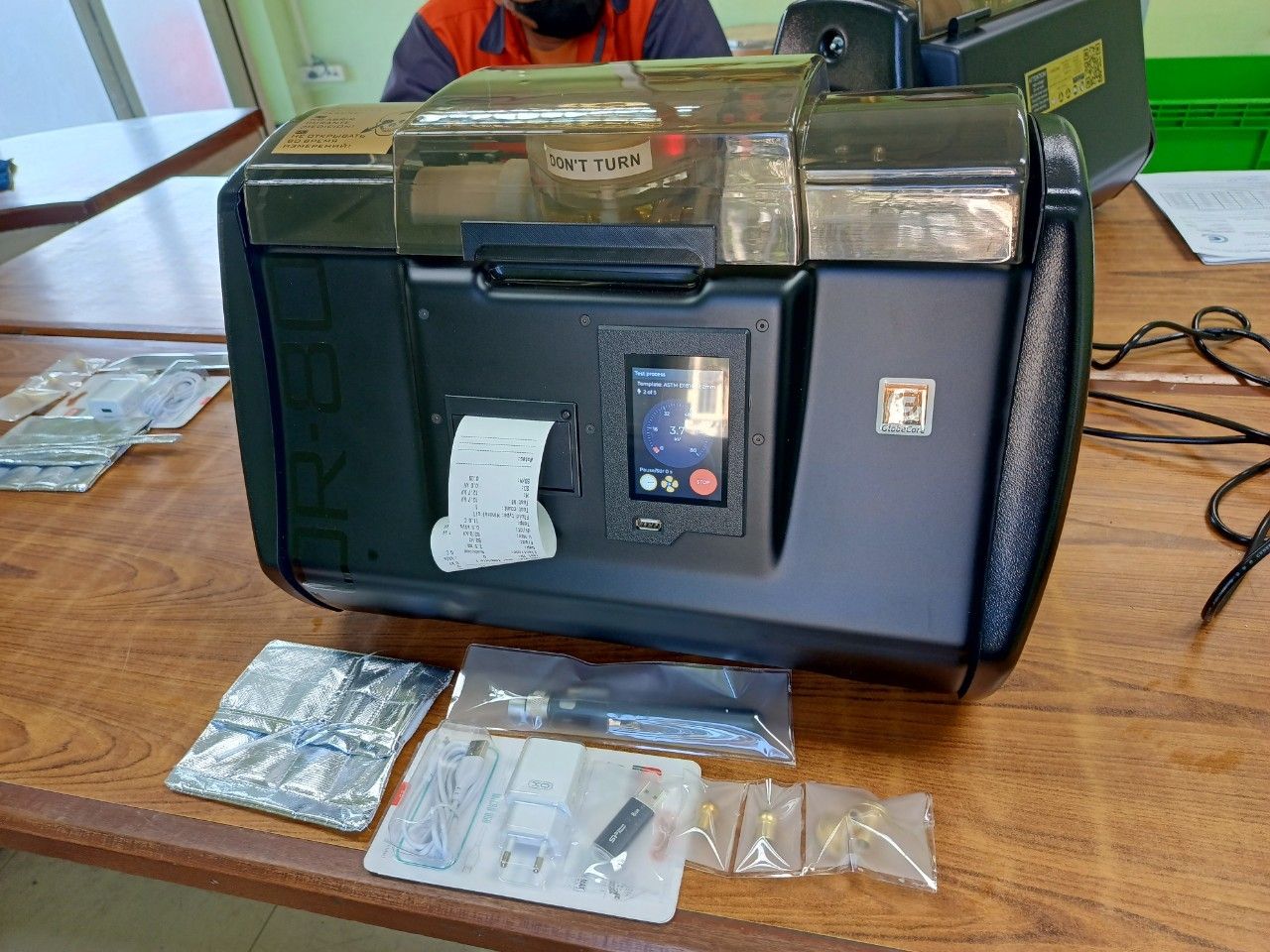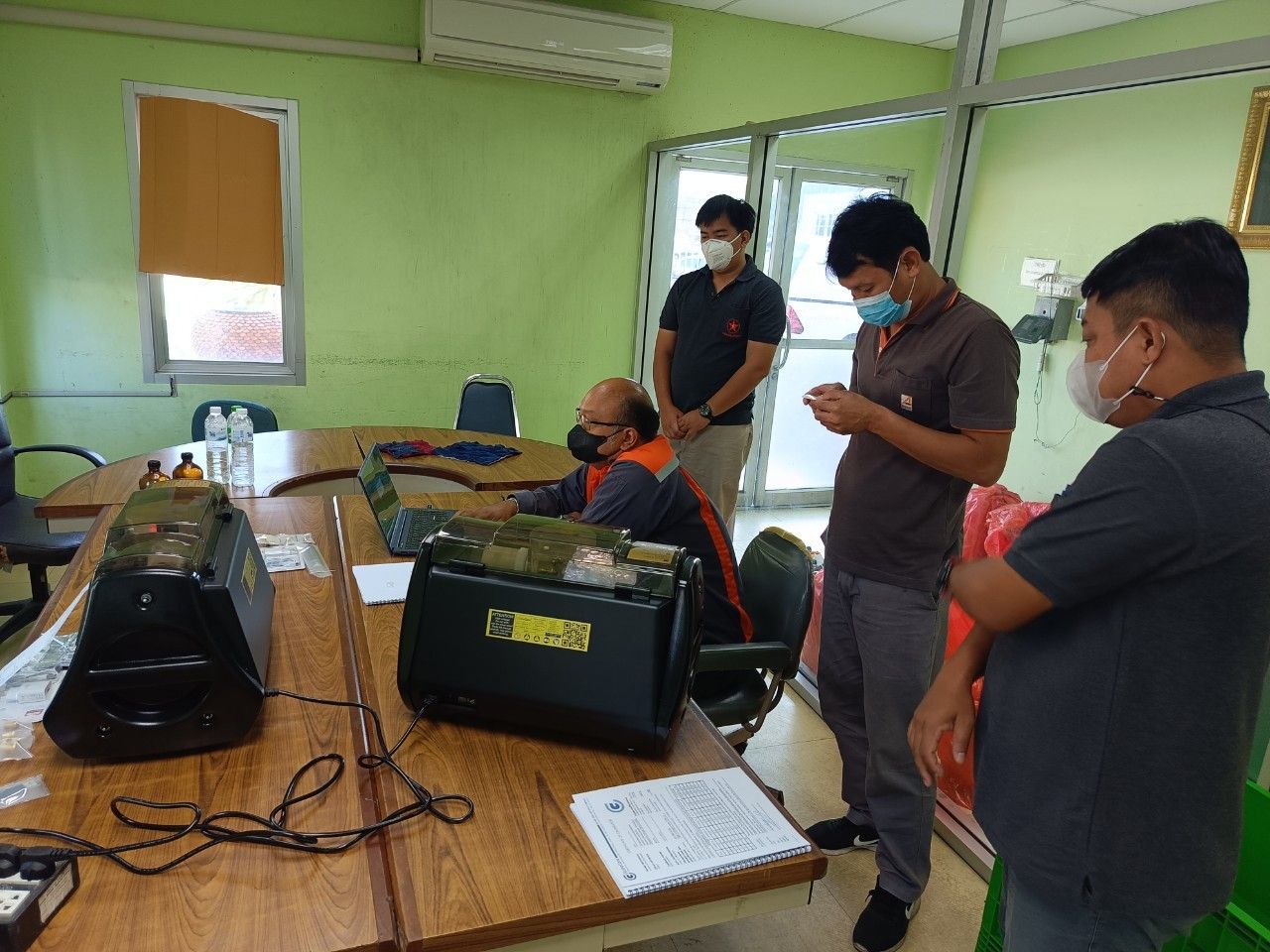The dielectric breakdown voltage
The measurement of the breakdown voltage of dielectric of transformers oil is becoming increasingly important in the monitoring systems of our equipment immersed in this fluid. Although the measurement of the breakdown voltage alone cannot identify the element generating a drop in the insulation capacity of the oil, it can indicate degradation trends that must be addressed as soon as possible.
The oil breakdown voltage values can be affected by several factors, which can degrade the oil and affect the fluid’s host equipment. Therefore, knowing of a low value in the dielectric breakdown voltage test should be an important alarm, but should not be considered as a final diagnosis. Since the characteristic that makes this measurement strong as a complement to field processes, makes it weak at the time of identifying the problem. And let me explain this statement further. The breakdown voltage of transformer oil can be affected by: moisture, solid particles, gases and other contaminants, but the characteristics of the test are not designed to identify the specific element that generates the final reduction of the breakdown voltage value. For this, it is convenient to understand the generality of this test and how it is carried out, both in the field and in the laboratory.
The BDV testing process
To understand well the high voltage breakdown tester working principle or BDV test for its acronym in English. We will summarize this process which is similar in the different standards that are found, since all will have elements in common such as: the constant voltage rise over time, the use of specific electrodes according to the standard used, the measurement of the last voltage value when the arc is originated and the need to perform a series of repetitions to the same oil studied to calculate the final value of BDV.
The BDV testing machines are equipment consisting of controlled voltage increase systems, which is injected into the oil by means of electrodes, which are adjusted to specific distances according to the oil BDV test standard being used, such as one of the most commonly used ASTM D 1816, which allows 2 different separations between the test electrodes, and each distance has different acceptance values. In the mentioned case the electrode spacings are 1mm and 2mm. The BDV test machine must increase the voltage value on its electrodes in a controlled way and once the arc is generated in the sample record the value at which this phenomenon occurred. This operation will be repeated several times and at the end an average of the values will be determined and reported.
As we can appreciate the process of determining the values of dielectric breakdown voltage test is just that, during the process is not performed a count of solid particles, nor does a determination of the amount of moisture present in the sampled fluid and much less can be considered a test to determine the gases present in the sample, this generates that at the time of testing we realize that there is some value (not specified) that affects the oil and reduces the value of the BDV test, in the event that this we present incorrect values. This forces us to perform a deeper inspection of the characteristics of the system in search of the specific element that is the cause of the decrease of this parameter.
Now from this same weakness comes its great strength, the breakdown voltage test becomes a simple method to determine the presence or absence of contaminants. Now if we are personnel in charge of servicing an insulating fluid because we are told that it has a large amount of dissolved gases, the BDV test becomes a spectacular ally to determine the progress of my process in the field, since at the beginning of the process we will perform an initial measurement and record the breakdown voltage value, then we will perform the corrective process, which in this case according to the standard C57. 637 2015 one of the simple options is the thermo vacuum process and then as the process progresses, we will test the breakdown voltage until the oil reaches adequate values, which indicates the affective extraction of the contaminant that produced the drop, in the case we are discussing the gases in the oil. This same process can be carried out in the procedures that have the intention of eliminating solid particles or even in the processes that seek the extraction of humidity.
As for the studies that are performed in laboratories it is common that a reduced list of tests are carried out, sometimes for lack of knowledge and sometimes for economic reasons, the use of equipment such as TOR80 for the determination of the oil breakdown voltage, becomes essential in these cases, since it is possible to start with some basic tests and then move to more specific tests as appropriate. Returning to the examples, if after sending the sample to a laboratory and perform a reduced set of tests, we realize that there are low BDV values is advisable to perform a study of furans and a study of moisture to complement the information of this test and in this way identify the cause of the drop in breakdown voltage.
On BDV sampling and maintenance
Another important aspect of the oil dielectric breakdown voltage test is the sampling procedure, since the extraction of the insulating fluid without following the proper procedures will generate a poor and misleading result of the quality of the oil. A poorly performed sample collection may generate unnecessary expenses, since it may be believed that the oil is in an advanced level of degradation. It is necessary to remove the sample fluid from any external element that could contaminate it and affect the oil’s characteristics. The samples to be taken must follow the specific characteristics of the method to be used for the measurement and the times requested for the execution of each of the runs must be respected. If the samples present contamination that can be determined with the simple eye, the test must be immediately discarded and classified as unsatisfactory. A proper cleaning of the components is essential and the correct purging process of the pipes from which the sample is taken are mandatory elements when working with oil samples in general, but even more so with dielectric breakdown voltage tests.
As for the maintenance of the equipment is very important to always maintain cleanliness, for obvious reasons the system will be constantly generating an arc between the test electrodes, keeping the electrodes according to the requirements indicated is essential for the proper functioning of the breakdown voltage equipment. Any corrosion or dirt on the electrodes must be removed immediately and the correct adjustment of the distances between the electrodes must be verified.
The high voltage breakdown tester
In response to this need GlobeCore presents the TOR 80 unit, a lightweight oil breakdown voltage tester which allows to perform the test in an agile way, either in the field or in a laboratory environment, the equipment has an automatic printing system that will give us a transformer oil bdv test report right at the end of the test and store in memory the results of our analysis to be able to reprint them at the appropriate time, also has a system of adjustment of the electrodes easy to manipulate, which is very convenient when we must modify the standards that we will use for the study. Another outstanding advantage of the TOR 80 is the ability to configure the different standards to be used, allowing us to add standards to those already preloaded in the system or even to generate our own test procedures for the oil.



